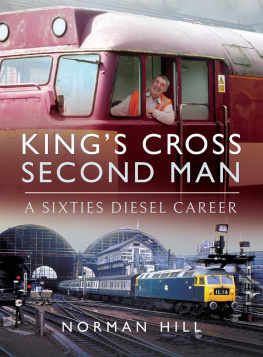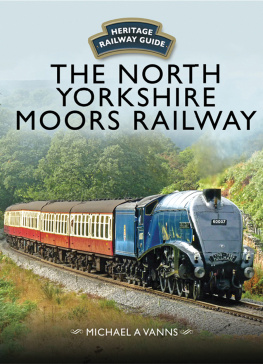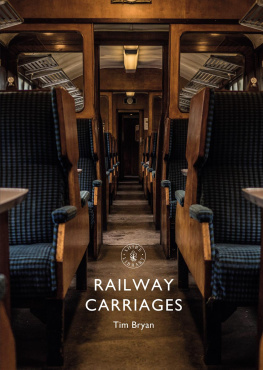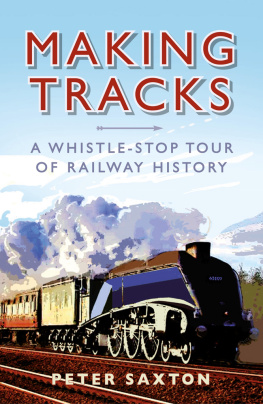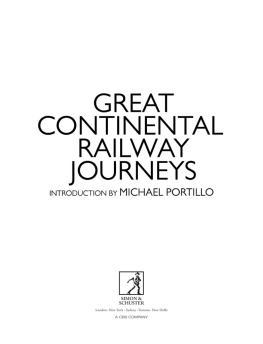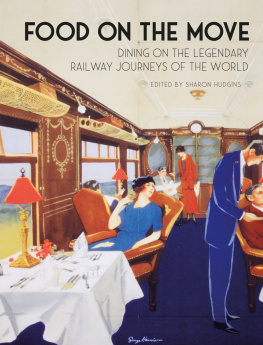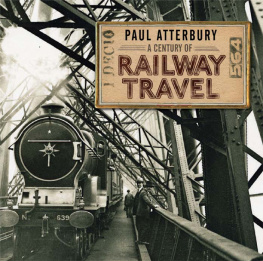A steam train runs across the majestic Glenfinnan Viaduct, on the West Highland Line in Inverness-shire, Scotland (shown ).
Railways a 19th century invention not only survived the 20th century but are now thriving in the 21st. There was no guarantee that would happen. After the Second World War, as motor car ownership soared and jets made air travel safe and relatively inexpensive, what role was left for the railways? There was no end of predictions that they would disappear, as trams and trolleybuses did in so many places. Lots of lines were closed, steam engines disappeared and lorries carried most of the freight. Now, however, that process has been reversed and the railways are enjoying a fantastic renaissance as high speed lines spread around the world, suburban services are jammed full of commuters and new passenger routes spring up, often on routes once abandoned.
Just as the cinema has survived the arrival of television, and traditional books the invention of digital versions, so railways seem set for a long and healthy future despite the popularity of the motor car. And one of the key reasons is that people love the railway journey. Travelling by train is an enjoyable experience in itself. It is not all about simply getting there. Sure, air travel might have its attractions but once you have been up in the sky a few times, the sight of clouds and distant land pales. Likewise, car travel is not often the fantasy portrayed in advertisements where new models speed along empty, bucket-list countryside dull trips along motorways or slow crawls through traffic-jammed towns are much likelier scenarios. Thats why there will probably never be a book called A History of the World in 500 Car Trips.
Rail journeys, on the other hand, allow you to look out of the window or sit quietly reading a book, knowing you will not be disturbed. Railways often fit more seamlessly with the environment; trains travel at a more palatable pace. Even a business trip or a routine journey can turn into a source of unexpected pleasure, with spectacular views or insights into peoples backyards. Its no surprise then that railway travel has inspired so much great literature, photography and film.
Train travel retains a romanticism that is lost from much of modern life. Getting there on a train is still part of the fun. And as so many of the examples in this book show, there are great train journeys to be taken almost anywhere in the world. The experiences can be so completely different. My personal favourite trips include numerous journeys in India, where its not necessarily the scenery that is most notable but simply the adventure of the journey amid the chaos and colour of one of the most fascinating countries in the world, and its diverse people. By contrast, check out another of my favourites: the ) 6.5 days to traverse half a continent
Enjoy the book and make sure you go on some of these wonderful trips.
The steam train is a defining image of historic railway travel but also a symbol of a bygone era.
INTRODUCTION
Trains are a little bit like time machines. Theres just something about them that seems able to whisk us back to a bygone age when travel was new, exciting and overspilling with possibilities and romance. Granted, this sensation is less apparent on a crowded 8 a.m. commuter service to London Waterloo than it is aboard the wood-pannelled carriages of the Venice Simplon-Orient-Express, but it is there somewhere. Trains retain an allure that buses, planes and automobiles cant match.
When youre on a train, its easy to cast your mind back to when this new form of transportation began transforming the world. From the early 19th century, railways began forging routes into remote areas and connecting once-distant communities, making the planet a smaller, more explorable place. Previously, human overland travel had been restricted by the speed of your feet or your horse. Suddenly, faraway cities, countries, even continents were within realistic reach.
However, trains dont just transport us back nearly 200 years. Even though the history of the railways is largely limited to the past two centuries, they are capable of carrying us much, much further into the past because you can see so much from a train window. Indeed, one of the many beauties of train travel is the fact that it enables every passenger to relax and admire the view. Planes are fast but remove us from the landscape. Cars are versatile, but oblige us to concentrate on driving. Buses have to fight for space amid the cars. Walking and cycling are excellent but require more fitness and time than many have or can afford. Trains, meanwhile, offer an effortless, up-close unfurling. With no need to engage your body or brain in the business of locomotion, you are free to sit back and enjoy the movie steadily streaming by outside.
Ecuadors , which launched in 2013, is a great example of railway revival.
To that end, A History of the World in 500 Railways is your guide to these time-travelling motion pictures. Arranged chronologically, in six chapters, this book tells the story of the planet through a collection of train journeys, by turns astonishing, groundbreaking, luxurious, little-known, high-speed, super slow, steam pulled, epic, endangered and sadly defunct. Each has something to say about life on Earth: how our canyons were formed, our mountains raised, our civilisations founded, our religions born, our wars started, our culture spread. For instance, some of the trains included here travel right past ancient petroglyphs or through glacier-gouged gorges; others trundle along tracks laid to secure empires, transport armies or open up wild frontiers.
Of course, the story begins aeons before the first track was ever laid. looks at prehistory, well pre-dating written records, let alone railways. And yet there are some spectacular train journeys that can deliver us to, through, over and around our geological beginnings and evidence of the earliest mankind. The subsequent chapters rumble from the dawn of time into the centuries Anno Domini (AD), via pharaohs, Romans, First Nations tribes, Berbers, Buddhists and biblical lands. Theres even the worlds first railway, courtesy of the ancient Greeks.
Then, tucked into the later pages, there are railways that follow old trade routes, medieval pilgrimages, military campaigns, human migrations and trailblazing explorers. By , we hit the advent of railways themselves, and hop aboard some of the pioneering lines that set trends, mastered impossible terrain and pushed the boundaries of human engineering. From here, we see how railways shaped nations, boosted economies, contributed to wars and assisted genocides, and also how they brought leisure travel to the masses. We end in the modern era, as trains are getting ever faster yet nostalgia for the slower, steam-powered era of rail travel has never been greater.


